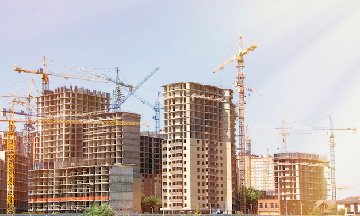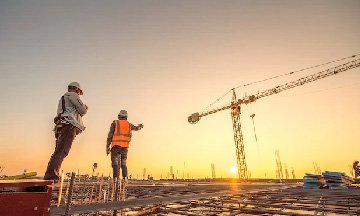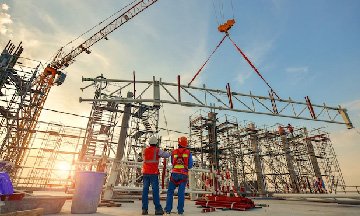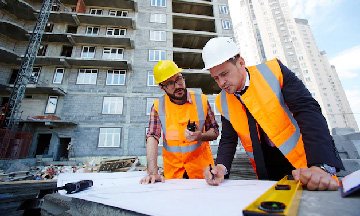Structural Steel Design Training Course
Course Overview
What is the importance of structural steel design?
Bridges, buildings, industrial warehouses, high-rise towers, and other numerous structures utilise steel in their design and construction to ensure maximum strength and withstanding the external structural forces. Steel is the only viable option in constructing these structures apart from reinforced concrete for various reasons, including high stiffness levels, high strength, toughness, resistance to force, and ductility. It is also relatively less heavy and has a high speed of construction with a very competitive low cost as compared to other materials. In other regions of the world, it is the favourite construction material superseding reinforced concrete because of its easy use when erecting temporary structures.
With all these benefits and impressions, steel design is a crucial course that applies in numerous industries with high-demand skills. This Zoe course will give the participants the required skills to design the commonly used designs based on the AISC, BS, ASD (allowable stress design), and the EC3. The participants will be able to design all the steel elements’ structures and all the connections.
This Zoe course will highlight bolt designs, welded connections that will be used in steel structures, compression, and tension members design, batten plates, lacing systems, beams design, bases design when to use steel, lateral restraint, combined axial and bending resistance, stress, and strain yield strength levels, how steel fails, shear resistance, bending, and axial resistance.
What is the purpose of structural design training?
The knowledge and skills gained from this course can be applied to various fields that use steel structures, but it can be of more interest to the petroleum industry because there is a continuous modification of structures in the facilities located on-shore to enable the structures to handle more load for more machine holding. Due to this, this course is considered crucial for integrity management in this kind of change.
Some of the highlights in this course will include:
- Pitfalls in steel construction and steel capabilities
- International and local standards with technical practice in the required structures
- Steel structure elements design
Course Objectives
The main objectives of this course are to enable participants to be able to:
- Gather the experience and skills needed to design high-quality steel structures
- Have a better understanding of the modern tools and techniques for risk-based inspection for a better maintenance plan
- Have a deep knowledge of the design of steel structures on machines
- Understand well load application on steel structure and how to deal with tension and compression stress
- Be intimately familiar with pipe rack design
- Get to use modern methods and techniques in the steel structure design
Training Methodology
Zoe Talent offers this course by utilising the industry’s best professionals who are the voice of authority in their areas of expertise because of their experience. Training will be delivered in the form of class notes, short videos, exercises, and case studies with a design that is supposed to ensure maximum understanding. When necessary, there will be individual and group presentations to showcase designs created.
All the participants are encouraged to actively participate in this course to make it engaging. Role play might be employed where necessary. Like all our acclaimed courses, this program also follows the ‘Do-Review-Learn-Apply’ model.
Organisational Benefits
Organisations that will have professionals who have undergone this course will benefit in the following ways:
- Application of advanced tools and techniques while designing steel structures
- Well-managed steel structure designing process to minimise costs
- Detailed risk assessment of all steel structures
- Increased profitability due to satisfied clients who will benefit from better designs
- Improved credibility due to producing high-quality steel designs
- The continuous and easily accessible go-to person on steel structure design matters
- Appropriate handling of all steel structure designing process
- Projects enhancements by high-quality engineering review of all the steel structures
- Better and quality investments by having better and more durable steel structures for a long lifetime
- Reduce the repair and maintenance costs by having durable designs
Personal Benefits
All the structural steel design training participants will be able to:
- Have a complete and wholesome understanding of all the steel design details
- Improved exposure and confidence to take up high-level positions due to the skills they will gain
- Enhanced and well-developed design of elements skills
- Better understanding and exposure to handling and working with advanced technology to achieve operations excellence by producing quality designs that will reduce risks of occupational hazards
- High contributions to the credibility of the organisation and development through enhanced safety by using better steel designs
- Complete understanding of the existing steel structures and risk foresight
- High placement for better jobs among their peers because of their steel structure design skills and knowledge
- Ability to lead others when doing structural steel designs
Who Should Attend?
- Civil engineers who intend to sharpen their design skills
- Steel fabricators who interact with steel designs regularly and would like to fabricate quality designs
- Project planners to increase their risk foresight skills
- Construction engineers who intend to easily identify structural design and calculations misfit while in the field
- Design engineers to produce quality designs
- Steel quality assurance officers who want to have a deeper understanding of their work
- Any other professionals who might be interested in understanding structural steel design
Course Outline
Module 1: Introduction to Structural Steel Design Training
- Various steel sections
- Computational of loads for different designs such as ASD and LRFG
- How and why steel structures fail
- Techniques to get an acceptable level of safety easily
- Building specifications and codes
- Review of basic civil and analysis structure
Module 2: Steel Beams Designs
- Beams and their definitions
- Design of beams
- Axial and bending tension subjection and endurance
- Deflection in beams design
- Using different software for simulation
- Beam columns design
- Code design procedure
- Equivalent moment factor
- Tension and bending forces on beam columns
- Eccentrically loaded beams design
- Nominal strength
Module 3: Steel Connections
- Fillet welds design
- How joints that have bolts handle shear tension
- Introduction to steel welds and their types
- Tension loads and their effect on bolted joints
- Bolted connections
- Eccentric connections
- Welded connections
Module 4: Analysis of Compression Members
- Euler formula in steel design
- Intermediate column formulas
- Long column formulars
- Short column formulas
- Failure modes
- Elastic buckling of slender
- Classification of the cross-section
- Displacements
- Single angle struts
- The effective length of compression members
- Compression members are composed of two components
Module 5: Design of Compression Members
- Built-up columns
- Base plates best designs for concentrically loaded columns
- Column splices design
- AISC best designs tables
- Single angle compression members
- Lacing and batten systems
- Compression members structure
Module 6: Composite Sections
- Composite constructions
- Concrete encased section designs
- Flexural strength
- Composite section moment capacity
- Composite section defections
- Cover plated beams
- Pan floors are an example of composite concrete and floors
Module 7: Steel Building
- Roof construction types
- Steel roofs
- Interior partitions using steel
- Exterior walls steel design
- Structural steel designs
- Fireproofing of steel buildings
Module 8: Advantages and Disadvantages of Structural Steel Design
- Limit state design
- Lateral torsional buckling LTB
- Design resistance and how it affects general strength
- Stress calculations
- Advantages of steel designs
- Disadvantages of steel design
Module 9: Stress and Resistance
- Stress concentration
- Fatigues resistance
- Corrosion resistance
- Structural steel products
- Fabrication and erection
- Residual stress
Module 10: Design of Plate Girders
- Web panel sheer exposure
- Plate girders
- Girder components welding
- General considerations
- Using ISO 800:2007 to design girders
- The behaviour of transverse web stiffness
- Loading considerations
- Fatigue effects
- Maximum load effects











